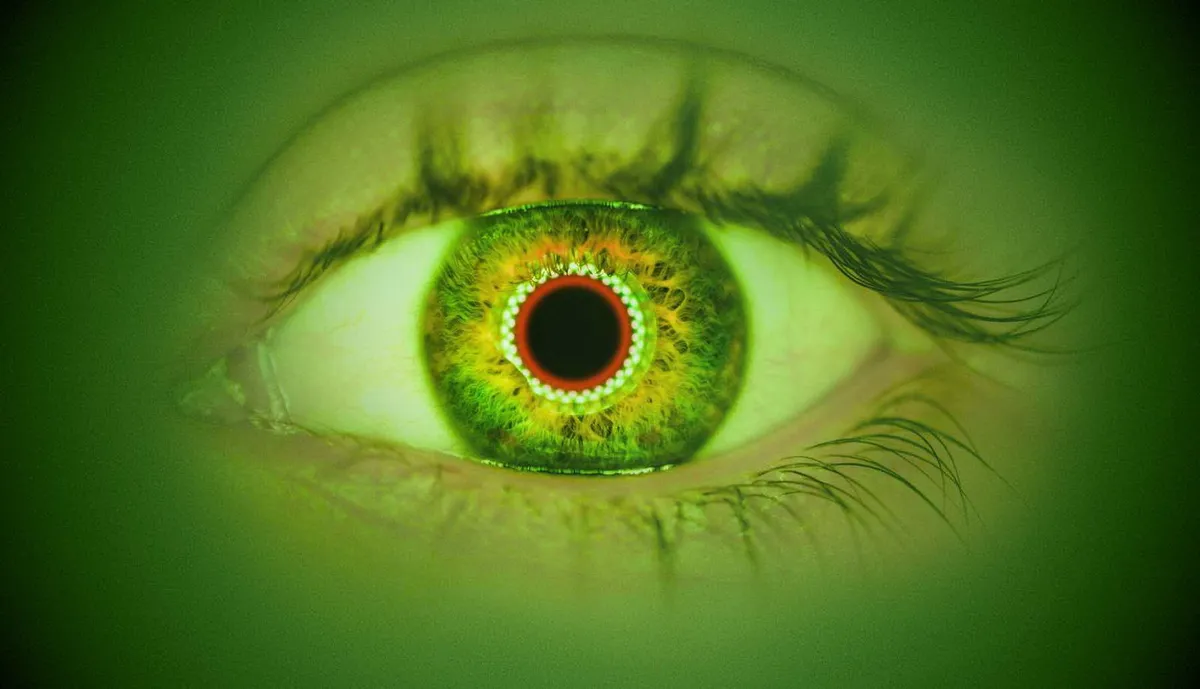
Scientists have made significant strides in developing an innovative night vision technology that transforms near-infrared light into visible light through specialized contact lenses. Recent experiments conducted with both mice and humans showcased the remarkable capability of these lenses, allowing mice to perceive both visible and near-infrared light without any external power source. This groundbreaking technology is reminiscent of the advanced visual systems portrayed in popular science fiction films, particularly the Predator franchise.
Designed by a collaborative team of neuroscientists and materials scientists, these contact lenses incorporate engineered nanoparticles that absorb near-infrared light (ranging from 800 to 1600 nm) and convert it into visible wavelengths (from 400 to 700 nm). This capability enables wearers to detect flickering infrared signals and discern the direction of light sources. Lead author Tian Xue, a neuroscientist at the University of Science and Technology of China, emphasized the potential of this research, stating, “Our research opens up the potential for non-invasive wearable devices to give people super-vision,” highlighting the technology's myriad possible applications.
Xue elaborated on the practical uses of this innovative technology, noting that flickering infrared light could be utilized for various purposes, including security, rescue operations, encryption, and anti-counterfeiting measures. The implications of such a night vision lens are profound, potentially transforming how individuals interact with their environments, particularly in low-light conditions.
The concept of "Predator vision," famously depicted in the film series, involves a specialized visual system that enhances an individual's ability to detect heat signatures and other concealed targets, such as individuals in camouflage. The newly developed contact lenses operate on similar principles. They are crafted by embedding nanoparticles into soft, biocompatible polymers, which are the same materials used in standard contact lenses. Following extensive testing, the results showed that mice equipped with these lenses behaved as if they could see in complete darkness.
In experiments, when presented with a choice between a dark box and one illuminated by infrared light, the mice wearing the specialized lenses avoided the infrared-lit box, whereas the control group exhibited no distinct preference. Furthermore, human participants demonstrated their ability to detect Morse code-style infrared flickers and accurately track the direction of infrared beams during testing. Interestingly, the study revealed that participants' night vision improved when they closed their eyes, as near-infrared light penetrates eyelids more effectively than visible light, thereby minimizing interference.
Another remarkable feature of this technology is its color-coding capability, which translates various infrared wavelengths into visible colors. For example, 980 nm light appears blue, 808 nm translates to green, and 1,532 nm manifests as red. This function not only enhances subtle infrared vision but could also assist individuals with color blindness by converting invisible wavelengths into visible tones. Xue explained, “By converting red visible light into something like green visible light, this technology could make the invisible visible for color blind people.”
Despite the promising advancements, the researchers identified a limitation: light converted directly on the lens can scatter, which affects resolution. To address this issue, they are developing a glasses-based system that utilizes the same nanoparticle technology to provide clearer details for high-resolution tasks. Currently, the lenses primarily detect infrared radiation from LED sources, but the research team is actively working to enhance their sensitivity to ambient infrared light from various sources, including body heat and environmental light, for broader applications in the future.
“In the future, by collaborating with materials scientists and optical experts, we hope to create contact lenses with more precise spatial resolution and higher sensitivity,” Xue concluded. This groundbreaking research was originally published in the Cell Press journal Cell on May 22, 2025, marking a significant milestone in the field of night vision technology.